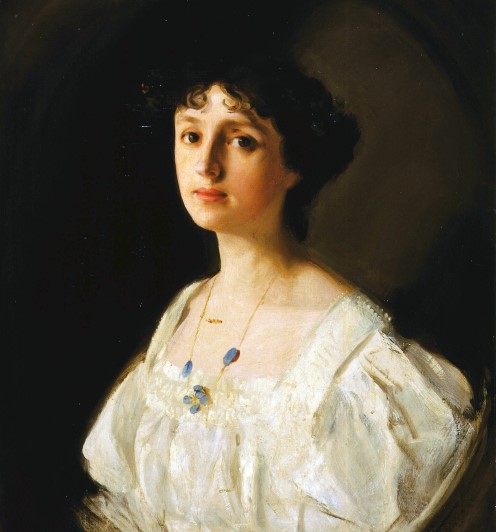Eldridge Cleaver? Harry Emerson Fosdick? Edna G. Fuller? Anonymous?

Question for Quote Investigator: The world faces many difficulties, and each of us must shoulder the responsibility for helping to solve or ameliorate these difficulties. Here are three versions of a pertinent adage:
(1) Each individual is either part of the problem or part of the answer.
(2) You and I are either part of the solution or part of the problem.
(3) If you’re not part of the solution you’re part of the problem.
This saying has been attributed to U.S. pastor Harry Emerson Fosdick and U.S. activist Eldridge Cleaver. I have not seen any solid citations. Would you please explore the provenance of this expression?
Reply from Quote Investigator: The earliest match known to QI appeared in the “Columbia Daily Spectator” of New York on October 16, 1936 within an advertisement for a church service conducted by Reverend Harry Emerson Fosdick. Boldface added to excerpts by QI:1
The Riverside Church
Riverside Drive and 122nd Street11 A. M. Morning Worship
Harry Emerson Fosdick
“ARE WE PART OF THE PROBLEM OR THE ANSWER?
On October 27, 1936 “The Windsor Daily Star” of Ontario, Canada published a column containing the following:2
In a world which turns so quickly to the lure of pleasing generalities, it is well to pause and think deeply of whether each one, as an individual, is a part of the problem or a part of the answer, says Rev. Harry Emerson Fosdick, D.D., pastor of Riverside Church, New York City.
QI believes that Harry Emerson Fosdick deserves credit for originating this family of sayings. During the 1930s several different phrasings were attributed to him. Eldridge Cleaver employed the saying by 1968.
Below are additional selected citations in chronological order.
In November 1936 “The Meriden Daily Journal” of Connecticut published a guide to upcoming radio broadcasts. The sermon by Fosdick was broadcast on local radio station WJZ:3
WJZ-Are We Part of the Problem or of the Answer?
— Harry Emerson Fosdick.
On December 3, 1936 a columnist in “The York Dispatch” mentioned the saying twice while crediting Fosdick:4
Whether we think so or not, you and I are either problems or parts of the answer to that problem. This fact was brought forcibly to those of us who listen to evening vespers conducted by Dr. Harry Emerson Fosdick each Sunday afternoon.
. . .
Whether we lend our influence to the side of revolution or constructive building, we are a part of the problem or a part of the answer.
On December 12, 1936 “Intelligencer Journal” of Lancaster, Pennsylvania printed another version:5
On which side are you throwing your influence in this matter? Are you, as Dr. Fosdick says, a part of this great problem, even tho’ only in what you may regard as little ways, or are you a part of its solution?
In June 1937 “The Tampa Daily Times” of Florida printed an instance while crediting Fosdick:6
One thing is clear, man is more often the problem than the world he has created. Dr. Harry Emerson Fosdick asks, “Are you a part of the great problem of life, or are you a part of the solution of the problem?” Everyone decides in the course of his life whether he is going to make a world, or let the world make him.
In August 1937 “The Daily Journal-Gazette” of Mattoon, Illinois credited Fosdick with another instance:7
Harry Emerson Fosdick says, “A man is either a part of the problem or a part of the answer.” Where does that put You? — in the Home, in the Church, in the Community, are you a part of the problem or a part of the answer?
In November 1937 “The Gettysburg Times” of Pennsylvania reported on a speech delivered by Reverend Gerald Neely of Christ Lutheran Church:8
He declared that the responsibilities of life must be accepted with its rewards and held that each individual must answer the question — Am I a part of this world’s problem or a part of the answer to that problem?”
In 1938 “The Sunday Sentinel-Star” of Orlando, Florida printed a quotation from a speech delivered by Edna G. Fuller:9
Mrs. Fuller’s talk dealt with the political responsibility of every woman towards her community and she stressed the necessity of supporting the right candidates and the right measures, epitomizing her subject by saying that “by our attitude, we determine whether we are a part of the political problem or a part of its solution.”
In 1941 Harry Emerson Fosdick published “Living Under Tension: Sermons on Christianity Today”, and he included a religious version of the saying:10
We need Christ’s radical remedy . . . within ourselves the gospel of forgiveness and power — those two, forgiveness and power — by which, one by one, men and women are transferred from being part of the problem to being part of the solution.
In 1944 Minister Edwin F. Shake wrote an article in the “Seymour Daily Tribune” of Indiana, and he employed the saying:11
The world is desperately seeking a solution to its problem of how to prevent war and establish an abiding peace. It is the greatest problem before the world at this hour. Every man and woman in the land is either a part of the problem, or a part of its solution.
In 1952 Harry L. Bryson of the American Farm Bureau Federation delivered a speech in Macungie, Pennsylvania, and he employed a version that began with “if”:12
He urged everyone to study the issues and make the proper decisions adding a final warning note. “If you are not part of the solution you are part of the problem.”
In March 1968 Paul Yearout employed the adage when he delivered a speech at the South Salem High School of Salem, Oregon:13
“You are without a doubt the finest generation ever to come up. But you’ve got to come up with intelligent decisions, not throw your life away.
“Either you’re part of the problem or you’re part of the solution.”
By July 1968 the adage was being used as a motto for the U.S. government service program VISTA (Volunteers in Service to America):14
“If you’re not part of the solution, you’re part of the problem.” (VISTA)
In September 1968 the “Chicago Tribune” printed an editorial with a quotation ascribed to Eldridge Cleaver:15
“If you ain’t part of the solution, you part of the problem, you dig? There’s no more middle ground. We gonna provide a situation that’s gonna force the Babylonians to deal with it.”
In October 1968 Eldridge Cleaver spoke at Stanford University in California. He used the expression but disclaimed authorship:16
Because it’s been said that today, you’re part of the solution or you’re part of the problem. There is no more middle ground, because the problem is rampant, the problem is a problem of survival, of blood, of your heart beating, of the hearts of people continuing to beat.
A separate QI article located here examines the humorous saying “If you are not part of the solution then you’re part of the precipitate”.
In conclusion, QI believes that Harry Emerson Fosdick deserves credit for originating this family of sayings. He used instances on multiple occasions, and during the 1930s he received credit for several different phrasings. Many people used different versions of the adage during subsequent decades including Eldridge Cleaver.
Image Notes: Illustration of puzzle pieces from PIRO4D at Pixabay. The image has been cropped.
Acknowledgements: Great thanks to Steve Robinson whose inquiry led QI to formulate this question and perform this exploration. Special thanks to Simon Koppel who told QI about the first citation dated October 16, 1936. Additional thanks to previous researchers including Ralph Keyes, Nigel Rees, Jennifer Speake, Charles Clay Doyle, Wolfgang Mieder, and Fred R. Shapiro. “The Dictionary of Modern Proverbs” explored this saying and found citations beginning in 1937. Also, thanks to SKMurphy who suggested linking this article to the QI article about the quip mentioning precipitate.
Update History: On June 13, 2023 the citations dated October 16, 1936 and November 21, 1936 were added to the article. In June 29, 2023 a link to a variant quip was added. On May 3, 2024 the format of the bibliographical notes was updated. Also, the full article was placed on this website.
- 1936 October 16, Columbia Daily Spectator, Volume LX, Number 17, Section: Religious Announcements, Advertisement: The Riverside Church at Riverside Drive and 122nd Street, Quote Page 2, Column 4, New York. (Columbia Spectator Archive; accessed on June 13, 2023; website:spectatorarchive.library.columbia.edu) link ↩︎
- 1936 October 27, The Windsor Daily Star, As We See It by W. L. Clark, The Lure of Generalities, Quote Page 2, Column 1, Windsor, Ontario, Canada. (Newspapers_com) link ↩︎
- 1936 November 21, The Meriden Daily Journal, Journal Radio Programs, Tomorrow P.M., Time: 4:00, Radio Station: WJZ, Quote Page 7, Column 2, Meriden, Connecticut. (Newspapers_com) ↩︎
- 1936 December 3, The York Dispatch, Musings of a Traveling Man, Quote Page 6, Column 5 and 6, York, Pennsylvania. (Newspapers_com) ↩︎
- 1936 December 12, Intelligencer Journal, Dr. Twombly Calls Upon Christians To Save Moral Standards Of U.S. (Continuation title: Dr. Twombly), Start Page 1, Quote Page 14, Column 7, Lancaster, Pennsylvania. (Newspapers_com) ↩︎
- 1937 June 5, The Tampa Daily Times, Attend Your Church Sunday!: Are You Making a World Or Is the World Making You? by Adiel J. Moncrief Jr., Quote Page 6, Column 6, Tampa, Florida. (Newspapers_com) ↩︎
- 1937 August 13, The Daily Journal-Gazette, Church Notices and Sermon (Filler item), Quote Page 4, Column 8, Mattoon, Illinois. (Newspapers_com) ↩︎
- 1937 November 12, The Gettysburg Times, Flaharty New President of Adams Bankers, Quote Page 1, Column 4, Gettysburg, Pennsylvania. (Newspapers_com) ↩︎
- 1938 November 6, The Sunday Sentinel-Star, Section: Society, Women’s Clubs of County Adopt Resolutions, Quote Page 3, Column 1, Orlando, Florida. (Newspapers_com) ↩︎
- 1941, Living Under Tension: Sermons on Christianity Today by Harry Emerson Fosdick, Sermon: The Modern World’s Rediscovery of Sin, Start Page 112, Quote Page 120, Harper & Brothers, New York. (Verified with scans) ↩︎
- 1944 January 22, Seymour Daily Tribune, Section: Churches, First Methodist Church, Minister Edwin F. Shake, Quote Page 3, Column 1, Seymour, Indiana. (Newspapers_com) ↩︎
- 1952 June 6, The Morning Call, Emmaus Rotary Host to Rural, Urban Program, Quote Page 44, Column 7, Allentown, Pennsylvania. (ProQuest) ↩︎
- 1968 March 22, Capital Journal, Boy, Does He Communicate by Alfred Jones (Capital Journal Reporter), Section 2, Quote Page 2, Column 5, Salem, Oregon. (Newspapers_com) ↩︎
- 1968 July 29, San Antonio Express, Hemisfair Today, Quote Page 1, Column 1, San Antonio, Texas. (Newspapers_com) ↩︎
- 1968 September 22, Chicago Tribune, Editorial: The Death Wish at Berkeley, Quote Page 24, Column 2, Chicago, Illinois. (Newspapers_com) ↩︎
- 1969, Eldridge Cleaver: Post-Prison Writings and Speeches, Edited by Robert Scheer, Chapter: Stanford Speech, Start Page 113, Quote Page 130, Date: October 1, 1968, A Ramparts Book: Random House, New York. (Verified with scans) ↩︎








